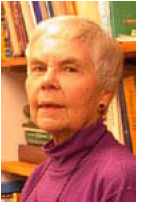Harvard Professor Courtney Cazden describes the power of moving backwards and forwards between different kinds of learning activity. Here, he gives an example of curriculum ‘weaving’:

Figuring out just how the all-important objective of connected learning works in actual lessons turns out to be complex …
A published Australian example will bring the concept of weaving to life. South Australian teacher Jennifer O’Brien has written a rich description of her own literacy teaching with 5–8 year-olds. O’Brien had two goals: ‘helping her children probe the representation of women’, and setting them ‘purposeful reading writing, and talking tasks’. Mother’s Day provided opportunities for both. In class discussions and individual writing, the students compared the lives of their own mothers with portrayals in the junk mail brochures that arrived in the mail, developed a questionnaire for interviewing their own mothers about preferred activities and gifts, wrote up the results and created new brochures moiré true to their own lives than the commercial ads. Here is O’Brien’s summary:
The classroom activities required students as text users to interact in both conventional and unexpected ways. While students mined the junk mail for representations of mothers, they used questionnaires quite conventionally to gather data, charts to record findings, and reports to present conclusions. When making meaning from the catalogues, students drew on cultural knowledge of Mother’s Day acquired in their family and community lives. They were able to use these same resources to question the representations of mothers, to identify gaps, and to suggest possible changes.
In weaving terms, O’Brien led her students back and forth between what they already knew from their everyday lives at home and the alternative perspectives and more academic skills in her curriculum. Here, it seems to me, her objective for her students was critical in both meanings of [that word], analytical and judgmental …
If we consider weaving as a resource for advancing curriculum objectives, as O’Brien did in her Mother’s Day unit, then there are obviously multiple objectives that might be advanced. I’m suggesting three categories of objectives that could apply in any curriculum subject … My three short names are CUltural, COgnitive, and CRitical, respectively.
CUltural: Here the focus is primarily back toward prior knowledge … from previous lessons, personal experience, or from home and community cultures …
COgnitive: The direction of focus here is forward toward the new academic subject matter that is the lesson focus … To paraphrase Dewey, the student is led to utilize prior knowledge to help understand new concept or procedural skills. One form of this weaving is often a metaphor or analogy, in which the ‘vehicle’ is of only temporary interest as a means of supporting student understanding of the curriculum topic.
CRitical: The focus here is bi-directional. Such weaving affects both prior knowledge and the new knowledge or skills. ‘CRitical’ here can mean contrastively analytical, reciprocally aiding student understanding of the new while also transforming understanding of the more familiar … It can also add the meaning of CRitical as an evaluative perspective toward either the familiar or the new or both, as in O’Brien’s Mother’s Day example.
O’Brien, J. 2001. ‘Children Reading Critically: A Local History.’ Pp. 37–54 in Negotiating Critical Literacies in Classrooms, edited by B. Comber and A. Simpson. Mahway NJ: Erlbaum. p. 52.
Cazden, Courtney B. 2006. ‘Connected Learning: “Weaving” in Classroom Lessons.’ in Pedagogy in Practice 2006 Conference. University of Newcastle.
